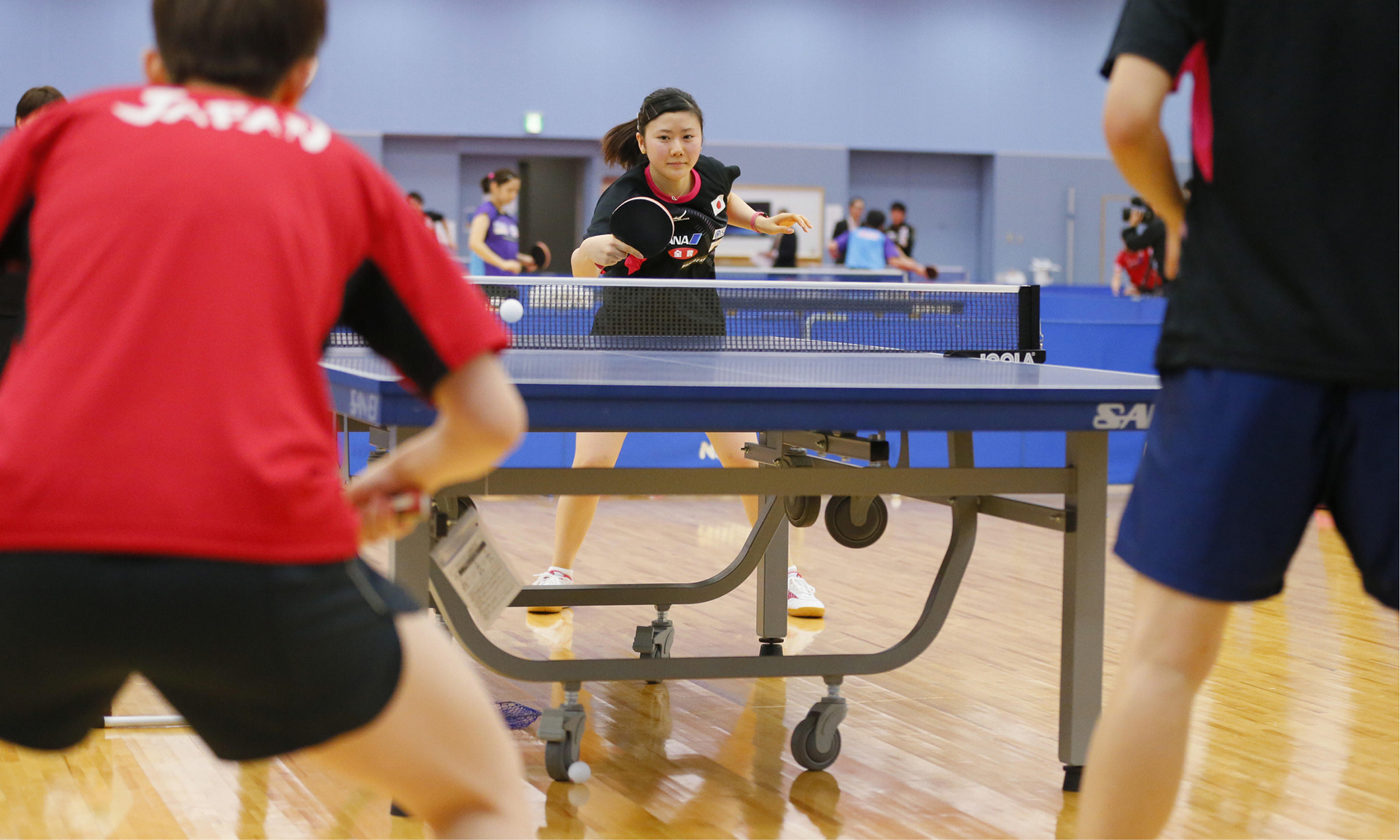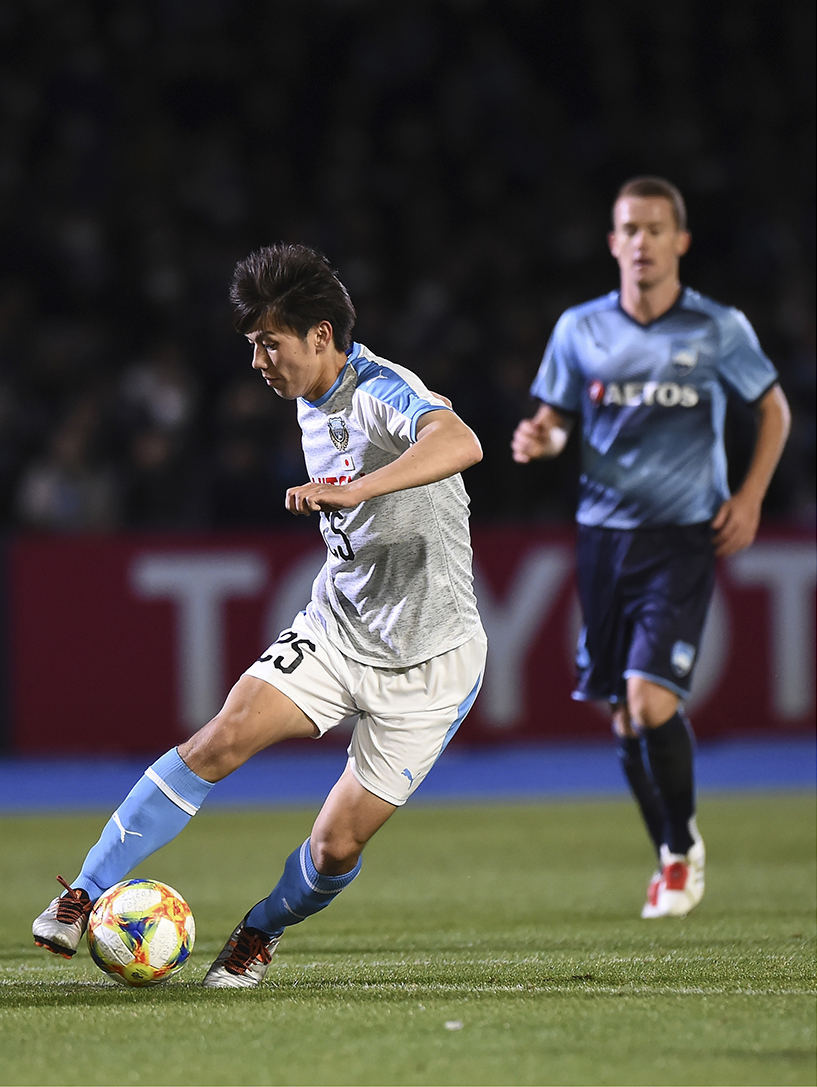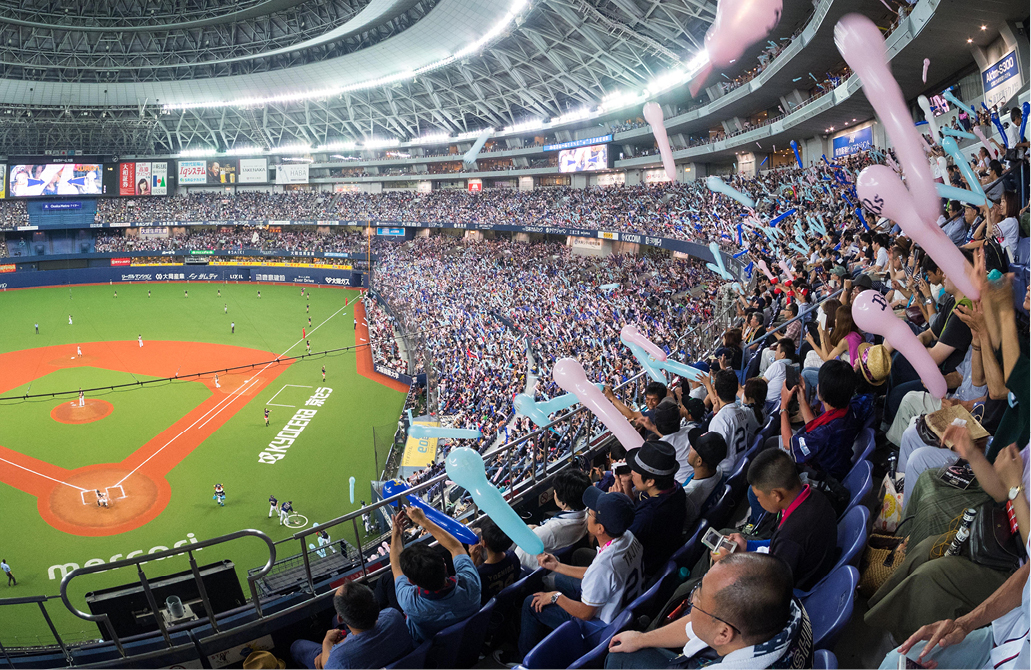スポーツ
sports
A way of life and leisure

D The Japan Open is an annual, international table tennis tournament held in Japan.
Growing up in Japan, sports often play a key role in everyday life, as extracurricular clubs and showing team spirit are crucial elements of the school experience. Many children join one of their school sports clubs in elementary or middle school and carry on right through college—and sometimes beyond, becoming members of local community teams as an adult.
A key reason behind this widespread participation is the intrinsically Japanese concept of wa: the importance of the group dynamic. While wa is an undercurrent running below the surface of Japanese life, sports is where the concept comes alive, exemplifying the crucial values of harmony, communication, and cooperation. With this kind of upbringing, sports becomes not just a fun leisure activity, but an essential part of Japanese culture.
However, it’s not all about deep-rooted tradition and philosophy. Another reason behind the importance of sports is also just the pure love of the game—whatever that may be.
For many, baseball is close to an obsession, dominating the back pages of newspapers. Yet centuries-old sumo still draws big crowds, too, and Japan lands many of its Olympic medals in martial arts.
While baseball and soccer are the most-watched sports on TV, Japan has diverse sporting interests, with everything from table tennis to rugby catching the public’s attention at some point during the year.
Be More Japan sports

D Soccer was introduced to Japan in the 1870s, by a Canadian officer of the Royal Navy.
Baseball
In 1867, an American professor named Horace Wilson at what is now the University of Tokyo is said to have first shown the Japanese how to play baseball. The love affair that began that day is still burning bright, and Japan is now giving back to the nation that introduced it to its favorite sport. Nowadays the names of Japanese baseball players roll off the tongue in the US.
The Japanese League
In the Nippon Professional Baseball league (NPB), 12 teams are split between the Pacific and Central leagues, where they play through a hundred-plus-game regular season in hopes of reaching the playoffs and competing for the coveted Japan Series. Going to a game, whether you understand it or not, is a fun experience, with choreographed cheering and clapping producing a rousing atmosphere on even the muggiest of summer nights.
Be More Japan sports

D The baseball season is 8 months long, going from April to October.
Be More Japan sports
Take Me Out to the Ball Game

Because of their many stints as Central League and Japan Series champions, the Yomiuri Giants have both the most avid fans and die-hard haters—who are happy to declare themselves the anchi Jaiantsu (anti-Giants), so going to see one of their games is sure to be a lively experience. But if you’re going to adopt a team, you’ll make far more friends opting for one of the other 11 choices—maybe the Hiroshima Carp or the Hanshin Tigers from Osaka, both of which have a passionate fanbase.
Be More Japan sports
Budo—The Martial Way
The legacy of feudal Japan is starkly apparent in the clattering of kendo practice swords and the poise of kyudo archers. Though no longer for war, the concept of budo (the martial way) is nevertheless preserved and respected through the practice of modern martial arts. The budo philosophy values not just the skills each sport entails, but the mental discipline they breed and the grounding calm they offer in an increasingly hectic society.
The Origins of Sumo
While sumo epitomizes many of the hallmarks of budo, it actually predates the origins of the martial way of feudal Japan. Nobody knows exactly when sumo began, but there is one word always given to the country’s most recognizable sport: ancient. It’s likely 1,500 years old at least—an estimate based on wall paintings and unearthed figurines of wrestlers—and is thought to have begun as part of harvest rituals, a way to entertain the gods and gain their support for a good crop.
What is known for sure is that in the Nara period (710–794) sumo bouts were first performed in the Imperial court as entertainment, and by the Edo era wrestlers were fighting for public crowds, to raise money for the construction of temples and shrines. This spread sumo’s popularity from beyond the sphere of the upper classes and throughout the masses, paving the way for sumo to be declared the national sport in 1909.

D Currently only men can be sumo wrestlers in Japan, but in other countries such as Brazil there are female rikishi.
Although sumo is considered very Japanese, it’s grown a big international following, and many wrestlers themselves come from overseas. The most successful sumo wrestler of all time, in fact, is Mongolian-born Sho Hakuho.
Be More Japan sports
Attending a Tournament

D Left to right: A rikishi purifies the ring by throwing salt; rikishi competing in the Grand Sumo Summer Tournament; as well as refereeing the bouts, gyoji (referees) often work in the stables where the rikishi live.
Every year Japan hosts six 15-day grand sumo tournaments—three in Tokyo’s 11,000-seat Kokugikan arena and the rest in the Prefectures of Nagoya, Osaka, and Fukuoka. They are an incredible display of pomp and power, with prebout posturing that sees the rikishi (professional wrestlers) tossing salt to purify the ring, stamping their feet hard into the ground, and then, when the referee gives the nod, crashing into each other with a thud and crack that sends gasps around the arena. At times, a bout ends in seconds, with one rikishi being thrown to the ground or tumbling out of the dohyo (ring) after an initial flurry of slaps and pushes. On other occasions, they spend long minutes holding on and jostling, trying to get leverage for a throw.
Either way, it’s not hard to see that sumo is a brutal sport, and wrestlers accumulate a string of injuries during a career. It’s a hard life, too: many rikishi live together in training stables, sharing sleeping quarters, performing chores for their seniors, and being put through grueling daily training sessions.
